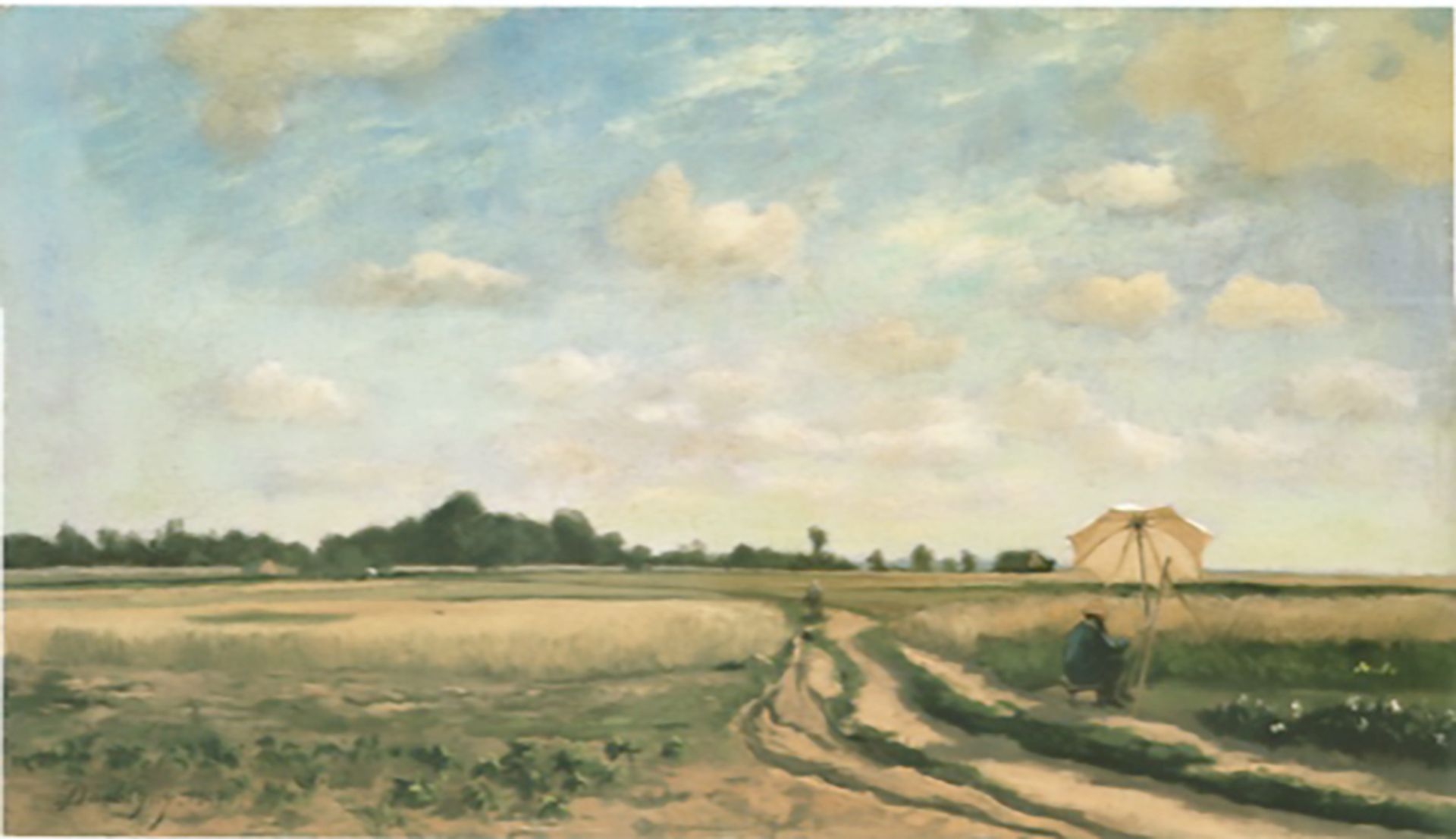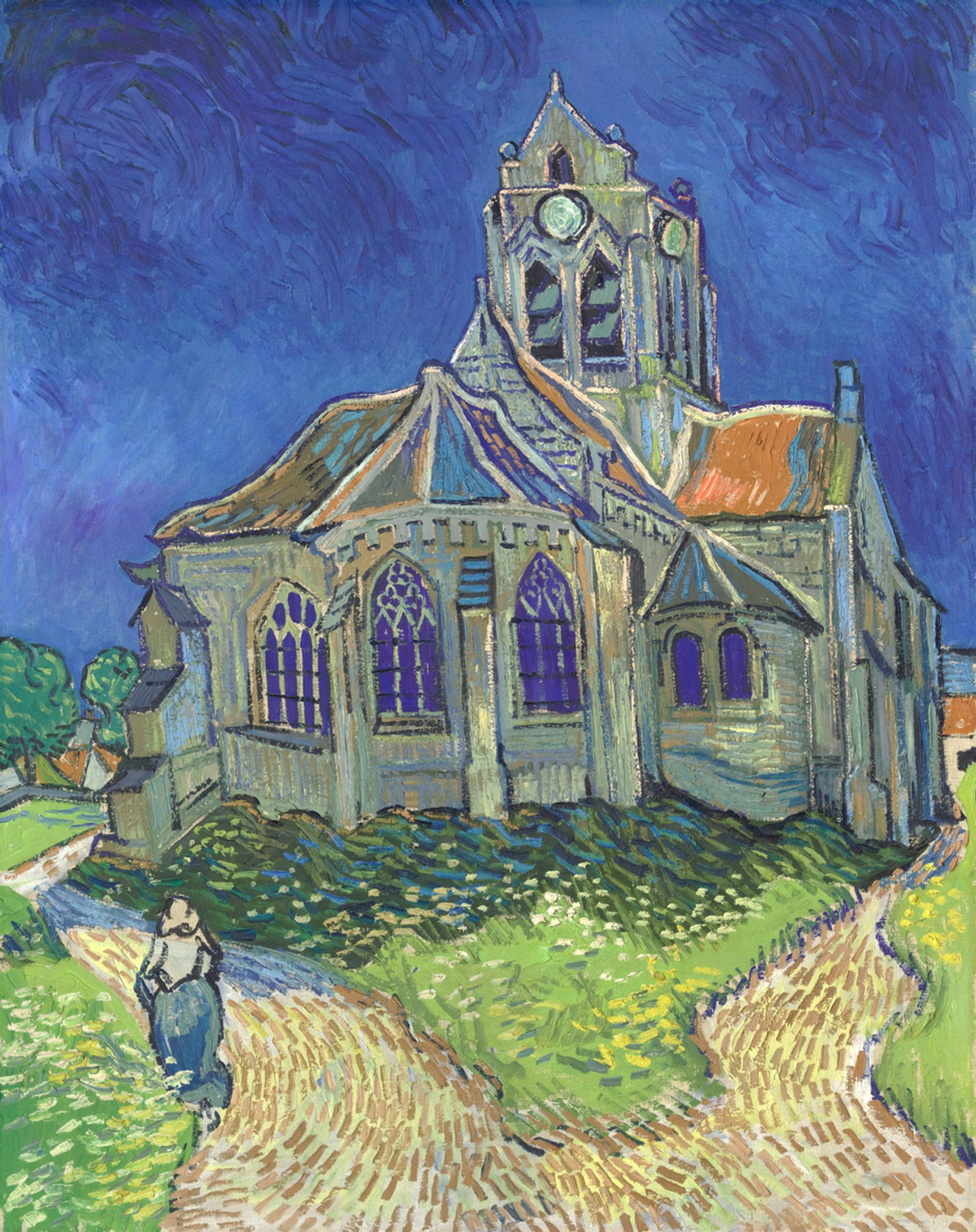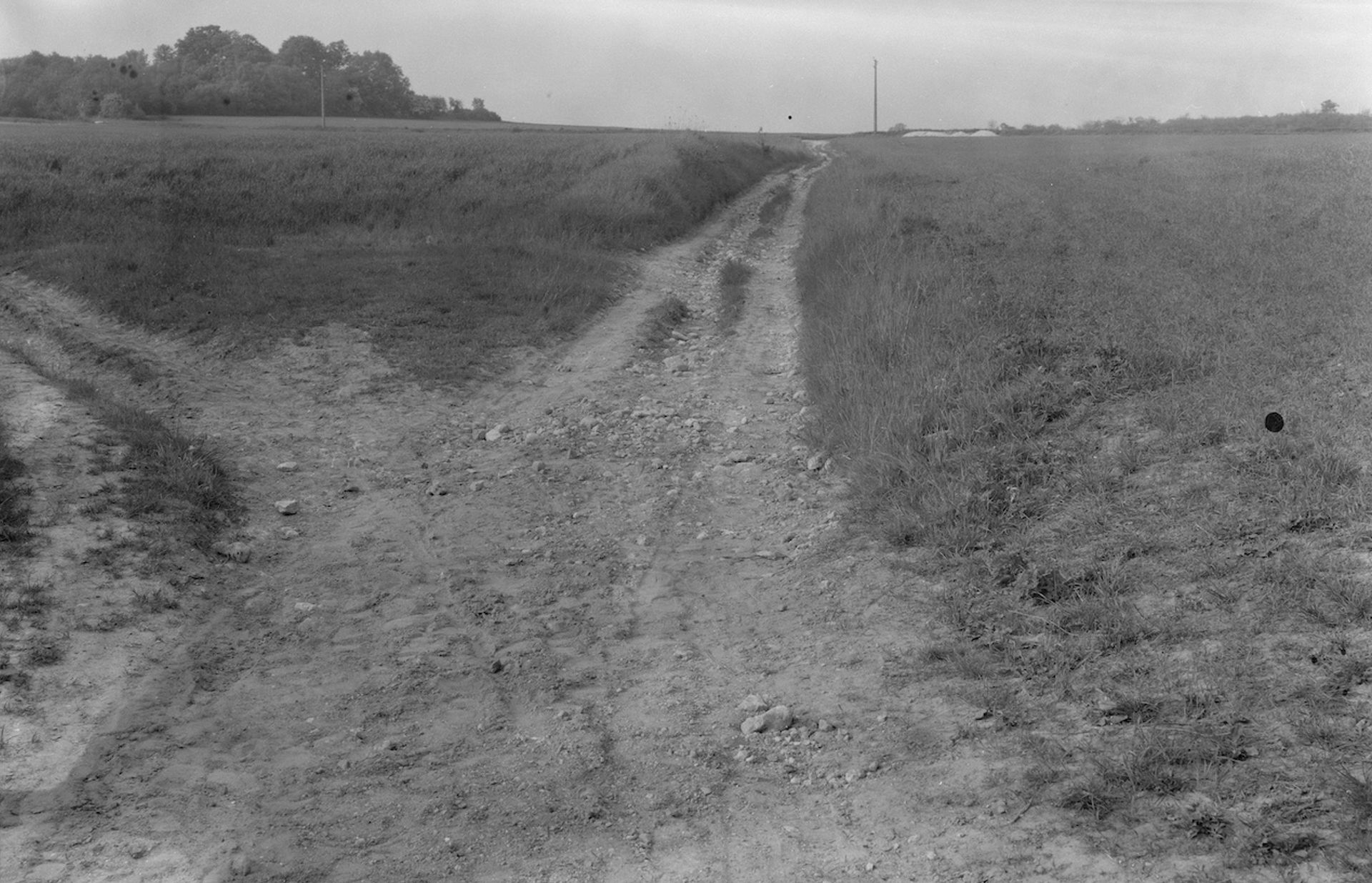Van Gogh Wheatfields With Crows
Wheatfield with Crows has traditionally been regarded as Van Gogh's terminal painting, with ominous birds swooping beneath a stormy sky. But although dating from July 1890, the month of the creative person's death, the thought that it was the final pic in a myth. Recent research shows that the work he painted the morn that he shot himself was really Tree Roots.
In my new book Van Gogh's Finale: Auvers and the Creative person's Rise to Fame (to be published on 21 September) I set out to examine Wheatfield with Crows afresh. Once one accepts that it is not the terminal motion picture, its subtleties begin to emerge.
Vincent loved the wheatfields on the plateau but above Auvers-sur-Oise, the village to the north of Paris where he lived for his terminal ten weeks. The fields lay just v minutes' walk from the inn where he lodged. He would often become in that location, either for a stroll and a chance to think—or to work.
Although the link does non seem to have been spotted earlier, a similar landscape to Wheatfield with Crows was captured by Charles-François Daubigny (1817-78), an earlier artist who had lived in Auvers and was profoundly admired by Van Gogh.
In Daubigny's The Rails on the Plain of Auvers, the small figure of a painter sits under a sunshade with a path heading off towards afar trees, probably those surrounding the hamlet. Van Gogh may even have set up up his easel on this very path. It is very unlikely that he knew this item Daubigny painting, simply the two artists were equally attuned to the beauties of the Auvers mural.

Charles-François Daubigny's The Track on the Evidently of Auvers (1843) Individual drove
Both works were probably painted in July, since the corn has ripened, merely has not yet been harvested. Despite their common subject matter, the two pictures could inappreciably be more different. Daubigny'south at-home and bucolic scene captures the rut of a summer's solar day, with an artist protecting himself under a sunshade. Although barely visible, the diminutive figure of a woman walks away towards the leafy copse.
Wheatfield with Crows emphasises just how much art had moved on since Daubigny's conventional 1843 painting. Van Gogh's Expressionist moving-picture show is full of foreboding. Although the crows are probably making their escape, one almost feels that they are swooping downwards on the viewer. The iii diverging paths appear to exist going nowhere, ending abruptly after veering away. The strangely coloured sky could hardly be more agitated, with a thunderstorm about to break over the eerily luminous wheat. No people announced in this unsettling scene.
The wife of Vincent'south brother Theo, Jo Bonger, certainly interpreted the motion-picture show every bit threatening. She recorded in her memoir: "As his concluding letters and pictures show", the ending approached "like the ominous black birds that dart through the storm over the wheatfields." When writing decades later Vincent'south death, Jo was only too aware of what had occurred and so shortly after the painting: the fatal shooting.

Book cover for Irving Stone's Lust for Life, depicting 1 of the last images in the film, 1956 John Lane publisher, London
What really fuelled the link between the painting and Van Gogh's death was Irving Stone's 1934 novel Lust for Life and the subsequent 1956 flick. Kirk Douglas, who played Van Gogh, stands abreast an easel, hard at work finishing Wheatfield with Crows. While adding the final touches, a flock of birds all of a sudden takes flight from the field and swirls aggressively around him. Impulsively, Douglas paints the crows into his picture, with thick, black, stabbing strokes. He and then staggers off, equally the camera pans towards a nearby farmer ploughing. A few seconds afterward nosotros hear the sound of a gun being fired: The End.
Wheatfield with Crows, painted quickly with confident brushwork, is undisputedly amid Van Gogh'due south about powerful works. Merely along with its sinister aspects, it is besides full of life: the ripening and swaying wheat, the soaring birds and the volatile conditions. Although the comparing is rarely fabricated, the diverging paths are not unlike those in the much more than restful Church at Auvers, completed but a month before.

Van Gogh's Church at Auvers (June 1890) Courtesy of the Musée d'Orsay, Paris; photo: RMN-Chiliad Palais/Patrice Schmidt
The spot where Van Gogh painted Wheatfield with Crows was probably just a few hundred metres to the n of the church, by a modest rails known as Sente du Montier. This location was captured in a 1950s photograph.

The probable spot where Wheatfields with Crows was painted Photo: Marc Edo Tralbaut, 1950s; courtesy of the Van Gogh Museum archive, Amsterdam
When in July 1890 Vincent painted panoramic landscapes in the plain above Auvers he described them in a letter to Theo and Jo: "They're immense stretches of wheatfields nether turbulent skies, and I made a point of trying to express sadness, farthermost loneliness."
Yet afterwards Vincent's words "farthermost sadness", he pulled dorsum. In an apparent about-turn, in the very aforementioned paragraph, he added that "these canvases volition tell you what I can't say in words, what I consider good for you and fortifying nearly the countryside". Vincent was both trying to reassure Theo and Jo well-nigh his psychological condition and expressing his love of the landscape.
Wheatfields had been 1 of Vincent'due south favourite subjects in Provence, before his arrival in Auvers. Wheat held a securely symbolic significance for him: farmers would sow seeds in autumn, the plants would sprout towards the end of the wintertime, the fields would turn green in spring, and finally the crop would ripen to a burnished gold in late July—ready for reaping. The harvest represented a time of plenty, although it temporarily left the fields bare and empty. And so the cycle of life would keep, year after year.
Three weeks after painting Wheatfield with Crows Vincent returned to the plateau one final fourth dimension. In my book, I pinpoint the spot, just to the n of the wooded château grounds where the fields begin—and five minutes' walk from the spot where he had depicted the diverging paths. A shot rang out. Van Gogh'southward career came to a tragic end, but his art lives on.
Martin Bailey is the author of Van Gogh'due south Finale: Auvers and the Artist'southward Rise to Fame (Frances Lincoln, 2021, available in the U.k. and U.s. ). He is a leading Van Gogh specialist and investigative reporter for The Art Paper. Bailey has curated Van Gogh exhibitions at the Barbican Fine art Gallery and Compton Verney/National Gallery of Scotland. He was a co-curator of Tate Great britain's The EY Exhibition: Van Gogh and Britain (27 March-eleven August 2019).

Martin Bailey'southward recent Van Gogh books
Bailey has written a number of other bestselling books, including The Sunflowers Are Mine: The Story of Van Gogh's Masterpiece (Frances Lincoln 2013, available in the UK and United states ), Studio of the Due south: Van Gogh in Provence(Frances Lincoln 2016, available in the UK and US ) and Starry Nighttime: Van Gogh at the Asylum (White Lion Publishing 2018, available in the UK and US ). Bailey'due south Living with Vincent van Gogh: the Homes and Landscapes that Shaped the Artist (White Lion Publishing 2019, available in the United kingdom of great britain and northern ireland and United states of america ) provides an overview of the artist's life. The Illustrated Provence Letters of Van Gogh has been reissued (Batsford 2021, bachelor in the United kingdom and Usa ).
To contact Martin Bailey, delight electronic mail vangogh@theartnewspaper.com. Please note that he does non undertake authentications.
Read more from Martin's Adventures with Van Gogh bloghither.
Van Gogh Wheatfields With Crows,
Source: https://www.theartnewspaper.com/2021/09/03/van-goghs-mysterious-wheatfield-with-crowswhat-does-it-really-mean
Posted by: fitzgeraldlecous.blogspot.com


0 Response to "Van Gogh Wheatfields With Crows"
Post a Comment